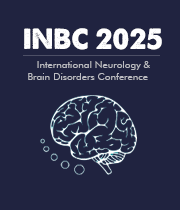Title : Movement disorders from anti-Seizure medications: A systematic review
Abstract:
Background: Anti-epileptic drugs (AEDs) are the mainstay of epilepsy management, effectively controlling seizures in most patients. However, they are increasingly recognized for their potential to induce de novo movement disorders. These adverse effects, which are often underdiagnosed or misattributed to underlying neurological conditions, can significantly impair motor function, reduce treatment adherence, and negatively impact quality of life.
Methods: We conducted a systematic review of case reports, case series, original research, and randomized controlled trials reporting new-onset movement disorders following AED initiation in patients of all ages. A comprehensive search of PubMed, Embase, Cinahl, and Cochrane databases was performed, yielding 2011 articles for screening. Forty-seven studies met inclusion criteria, encompassing over 15,000 patients worldwide. Data were extracted regarding AED type, movement disorder phenotype, latency of onset, reversibility, and associated risk factors.
Results: Tremor (91.5%) and ataxia (42.6%) were the most frequently reported AED-induced movement disorders. Valproate was associated with the broadest spectrum of effects, including tremor, ataxia, dystonia, and parkinsonism. Phenytoin was strongly linked to cerebellar ataxia and tremor, particularly at high serum levels. Lamotrigine and levetiracetam demonstrated favorable side effect profiles, with rare reports of tremor primarily in elderly patients on polytherapy. Carbamazepine and phenobarbital were associated with mild extrapyramidal symptoms or ataxia in older adults. Most adverse symptoms were reversible with dose reduction or AED withdrawal; 90% resolved within 7–30 days.
Conclusion: AED-induced movement disorders are clinically significant, dose-related, and frequently reversible. Increased awareness, early recognition, and individualized AED selection are essential to prevent misdiagnosis, minimize unnecessary therapy changes, and optimize patient outcomes, particularly in elderly or polytherapy populations. This review underscores the need for heightened clinical vigilance and further research into safer therapeutic strategies.



